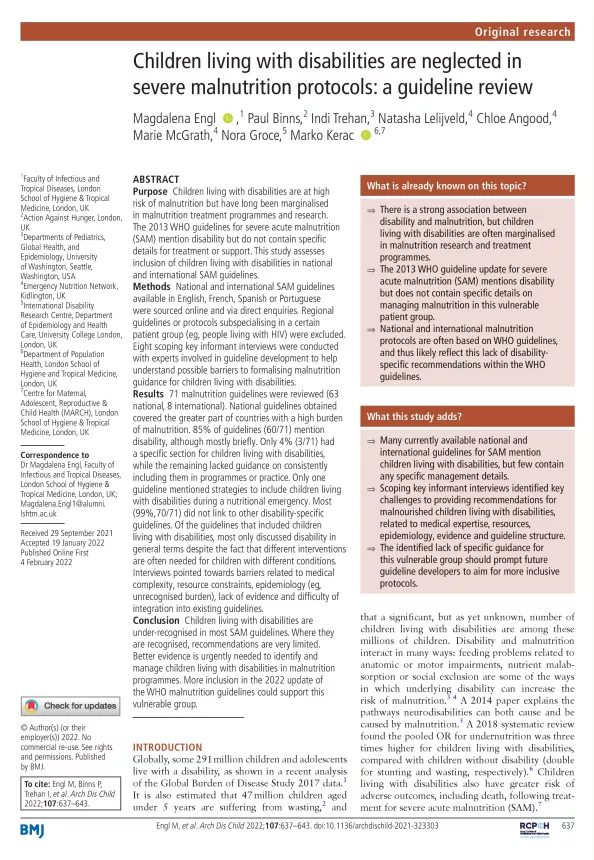Children living with disabilities are neglected in severe malnutrition protocols: a guideline review
Publication details
Abstract
Purpose
Children living with disabilities are at high risk of malnutrition but have long been marginalised in malnutrition treatment programmes and research. The 2013 WHO guidelines for severe acute malnutrition (SAM) mention disability but do not contain specific details for treatment or support. This study assesses inclusion of children living with disabilities in national and international SAM guidelines.
Methods
National and international SAM guidelines available in English, French, Spanish or Portuguese were sourced online and via direct enquiries. Regional guidelines or protocols subspecialising in a certain patient group (eg, people living with HIV) were excluded. Eight scoping key informant interviews were conducted with experts involved in guideline development to help understand possible barriers to formalising malnutrition guidance for children living with disabilities.
Results
71 malnutrition guidelines were reviewed (63 national, 8 international). National guidelines obtained covered the greater part of countries with a high burden of malnutrition. 85% of guidelines (60/71) mention disability, although mostly briefly. Only 4% (3/71) had a specific section for children living with disabilities, while the remaining lacked guidance on consistently including them in programmes or practice. Only one guideline mentioned strategies to include children living with disabilities during a nutritional emergency. Most (99%,70/71) did not link to other disability-specific guidelines. Of the guidelines that included children living with disabilities, most only discussed disability in general terms despite the fact that different interventions are often needed for children with different conditions. Interviews pointed towards barriers related to medical complexity, resource constraints, epidemiology (eg, unrecognised burden), lack of evidence and difficulty of integration into existing guidelines.
Conclusion
Children living with disabilities are under-recognised in most SAM guidelines. Where they are recognised, recommendations are very limited. Better evidence is urgently needed to identify and manage children living with disabilities in malnutrition programmes. More inclusion in the 2022 update of the WHO malnutrition guidelines could support this vulnerable group.

